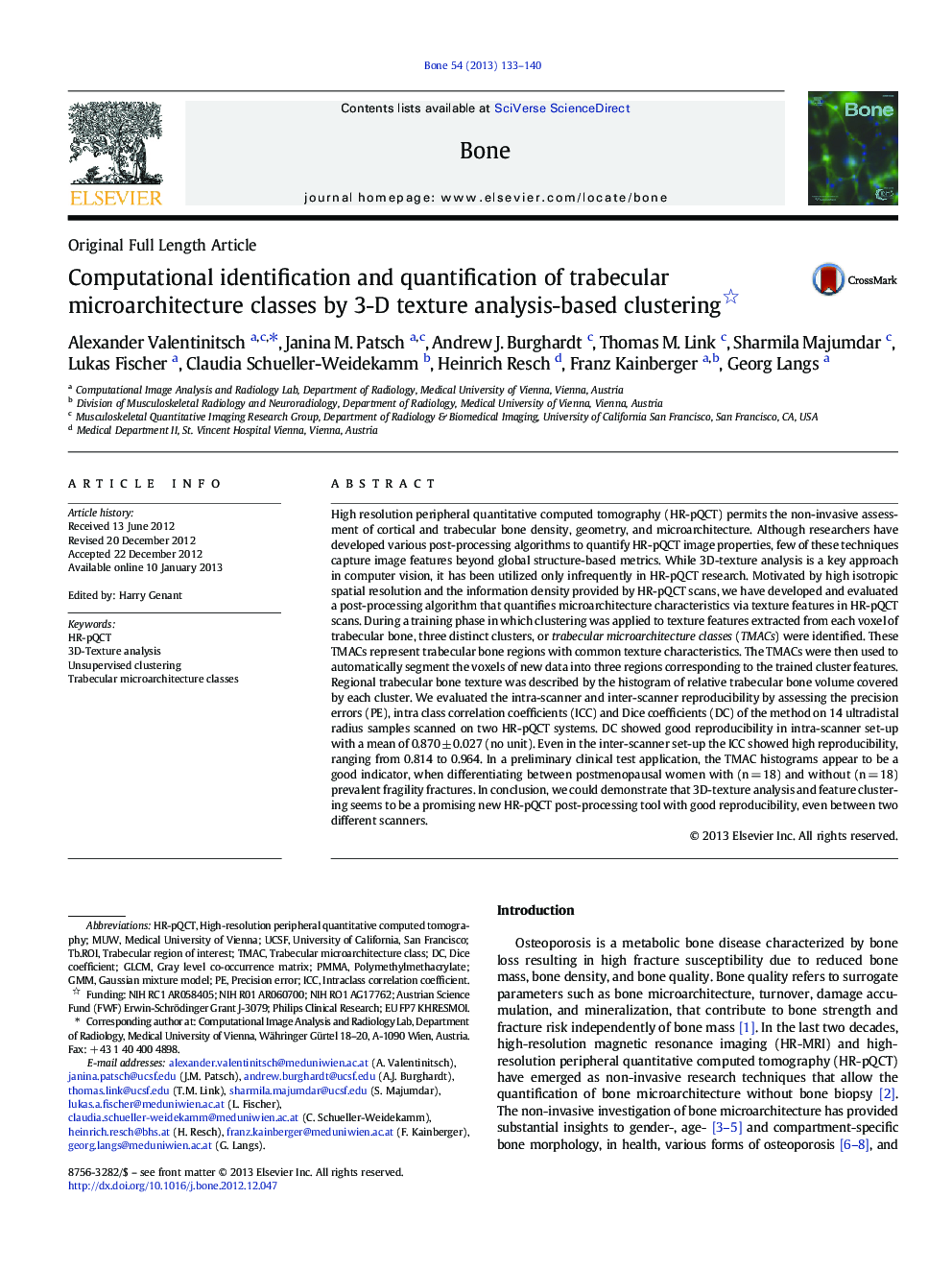| کد مقاله | کد نشریه | سال انتشار | مقاله انگلیسی | نسخه تمام متن |
|---|---|---|---|---|
| 5891084 | 1153264 | 2013 | 8 صفحه PDF | دانلود رایگان |

High resolution peripheral quantitative computed tomography (HR-pQCT) permits the non-invasive assessment of cortical and trabecular bone density, geometry, and microarchitecture. Although researchers have developed various post-processing algorithms to quantify HR-pQCT image properties, few of these techniques capture image features beyond global structure-based metrics. While 3D-texture analysis is a key approach in computer vision, it has been utilized only infrequently in HR-pQCT research. Motivated by high isotropic spatial resolution and the information density provided by HR-pQCT scans, we have developed and evaluated a post-processing algorithm that quantifies microarchitecture characteristics via texture features in HR-pQCT scans. During a training phase in which clustering was applied to texture features extracted from each voxel of trabecular bone, three distinct clusters, or trabecular microarchitecture classes (TMACs) were identified. These TMACs represent trabecular bone regions with common texture characteristics. The TMACs were then used to automatically segment the voxels of new data into three regions corresponding to the trained cluster features. Regional trabecular bone texture was described by the histogram of relative trabecular bone volume covered by each cluster. We evaluated the intra-scanner and inter-scanner reproducibility by assessing the precision errors (PE), intra class correlation coefficients (ICC) and Dice coefficients (DC) of the method on 14 ultradistal radius samples scanned on two HR-pQCT systems. DC showed good reproducibility in intra-scanner set-up with a mean of 0.870 ± 0.027 (no unit). Even in the inter-scanner set-up the ICC showed high reproducibility, ranging from 0.814 to 0.964. In a preliminary clinical test application, the TMAC histograms appear to be a good indicator, when differentiating between postmenopausal women with (n = 18) and without (n = 18) prevalent fragility fractures. In conclusion, we could demonstrate that 3D-texture analysis and feature clustering seems to be a promising new HR-pQCT post-processing tool with good reproducibility, even between two different scanners.
⺠3D-texture clustering of HR-pQCT data as a novel post-processing option ⺠Reproducibility data for tool validation for intra- and inter-scanner settings ⺠Differentiation of postmenopausal women with and without prevalent fractures
Journal: Bone - Volume 54, Issue 1, May 2013, Pages 133-140